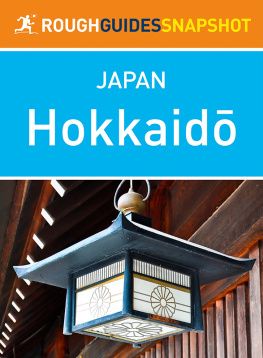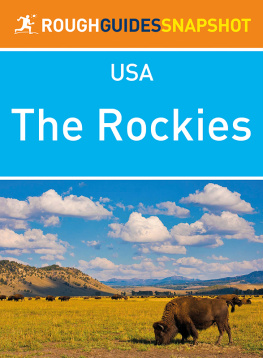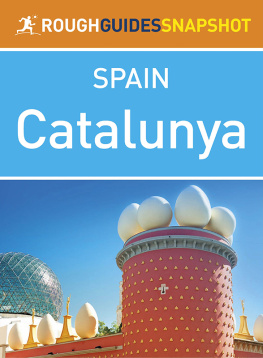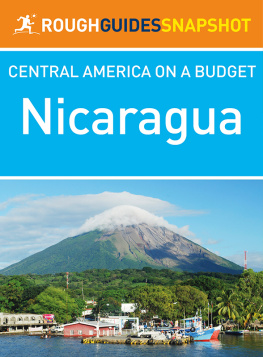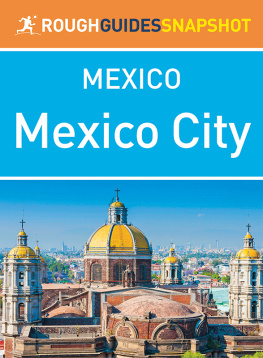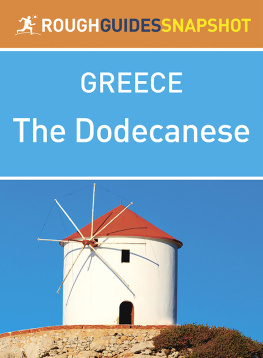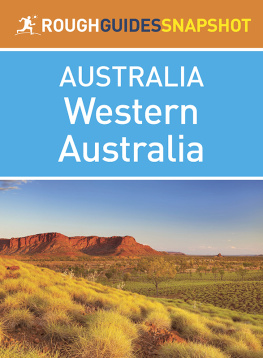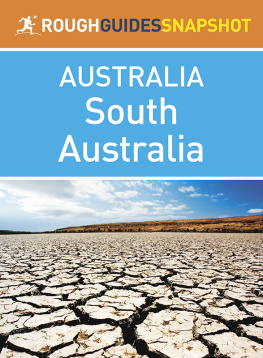How to use this Rough Guides Snapshot
This Rough Guides Snapshot is one of a new generation of informative and easy-to-use travel-guide eBooks that guarantees you make the most of your visit. An essential tool for pre-trip planning, it also makes a great travel companion when youre on the road.
. Shorter contents lists appear at the start of every section in the guide, and are designed to make chapter navigation quick and easy. You can jump back to these by tapping the links that sit with an arrow icon.
All of the main areas have a comprehensive map, which can also be viewed in the , accessible from the table of contents. Depending on your hardware, you will be able to double-tap on the maps to see larger-scale versions.
Throughout the guide, weve flagged up our favourite places a perfectly sited hotel, an atmospheric caf, a special restaurant with  . You can select your own favourites and create a personalized itinerary by bookmarking the sights, venues and activities that are of interest, giving you the quickest possible access to everything youll need for your time away.
. You can select your own favourites and create a personalized itinerary by bookmarking the sights, venues and activities that are of interest, giving you the quickest possible access to everything youll need for your time away.
Introduction to Tibet
Tibet (Bod to Tibetans, Xizang to the Chinese; , xzng), the Roof of the World, has exerted a magnetic pull over travellers for centuries. The scenery is awe-inspiring, the religious devotion overwhelming, and the Tibetan people welcoming and wonderful. Scratch below the surface, however, and it is all too apparent that Tibets past has been tragic, its present painful and the future bleak. Tibet today is a sad, subjugated colony of China. While foreign visitors are perhaps more worldly than to expect a romantic Shangri-la, there is no doubt that many are shocked by the heavy military presence and authoritarian restrictions, both reinforced following protests in 200708. The growing civilian Chinese presence, and construction of apartments and factories alongside traditional Tibetan rural homes and monasteries, are further causes of disquiet, but all this doesnt mean you should stay away. Many people, the Dalai Lama included, believe travellers should visit Tibet to learn all they can of the country and its people.
In reaching Tibet, youll have entered one of the most isolated parts of the world. The massive Tibetan plateau, at an average height of 4500m above sea level, is guarded on all sides by towering mountain ranges: the Himalayas separate Tibet from India, Nepal and Bhutan to the south, the Karakoram from Pakistan to the west, and the Kunlun from Xinjiang to the north. To the east, dividing Tibet from Sichuan and Yunnan, an extensive series of subsidiary ranges covers almost a thousand kilometres. The plateau is also birthplace to some of the greatest rivers of Asia, with the Yangzi, Mekong, Yellow and Salween rising in the east, and the Indus, Brahmaputra, Sutlej and some feeder rivers of the Ganges in the west, near Mount Kailash.
Tibets isolation has long stirred the imagination of the West, yet until a British expedition under the command of Colonel Francis Younghusband invaded in 1904, only a trickle of bold eccentrics, adventurers and Jesuit missionaries had succeeded in getting close to Lhasa, and then only at serious risk to their lives it was Tibetan policy to repel all influence from the outside world. So great was the uncertainty about the geographical nature of the country even 150 years ago, that the British in India despatched carefully trained spies, known as pundits, to walk the length and breadth of the country, counting their footsteps with rosaries and mapping as they went. When Younghusbands expeditionary force finally reached Lhasa, they were, perhaps inevitably, disappointed. One journalist accompanying them wrote:
If one approached within a league of Lhasa, saw the glittering domes of the Potala and turned back without entering the precincts one might still imagine an enchanted city. It was in fact an unsanitary slum. In the pitted streets pools of rainwater and piles of refuse were everywhere: the houses were mean and filthy, the stench pervasive. Pigs and ravens competed for nameless delicacies in open sewers.
Since the Chinese invasion in 1950 (China prefers the term liberation, to which youll see endless Communist-erected monuments), Tibet has become increasingly accessible, with approaches eased by plane links, paved roads and the controversial QinghaiLhasa railway. Each new route has accelerated heavy, government-sponsored migration into the region, and although it is impossible to know how many Chinese now live here like so much else, population data is strongly disputed it is likely they outnumber ethnic Tibetans. The situation is most marked in the cities, where the greatest opportunities exist: not only are the numbers of Han and other Chinese growing all the time, but they are also increasingly economically dominant a situation further exacerbated by the rail line.
Todays Tibetan Autonomous Region (TAR), though covering a massive 1.2 million square kilometres, is but a shadow of the former Tibetan lands. The old area, sometimes referred to as Greater Tibet, was carved up by the Chinese following their invasion, when the Amdo and Kham regions were absorbed into Qinghai, Sichuan, Gansu and Yunnan provinces. The TAR consists only of the West and Central (U-Tsang) regions of Greater Tibet and divides into four geographical areas. The northern and largest portion is the almost uninhabited Chang Tang, a rocky desert at an average altitude of 4000m, where winter temperatures can fall to minus 44C. South of this is the mountainous grazing area, land that cannot support settled agriculture, inhabited by the wide-ranging nomadic people with their herds of yaks, sheep and goats. Eastern Tibet, occupying around a quarter of the TAR, is heavily forested. The relatively temperate southern valleys, sandwiched between the nomad areas and the Himalayas along the southern border, are the most hospitable for human habitation. As such, this is the most populated area and where visitors spend the majority of their time, particularly in the extensive valley system of the Tsangpo River (Brahmaputra) and its tributaries.
Lhasa, Shigatse and Gyantse offer the most accessible monasteries and temples the Jokhang, Tashilunpo and the Kumbum, respectively and are also tourist-friendly cities with the biggest range of facilities in the region. The Potala Palace in Lhasa remains an enduring image of Tibet in the Western mind and should on no account be missed, plus there are plenty of smaller sights in the city to keep anyone busy for several days. Farther afield, the Yarlung and Chongye valleys to the southeast boast temples and ancient monuments, and the ancient walled monastery of Samye is easily combined with these. The route between Zhangmu on the Nepalese border and Lhasa is well established, although by no means overcrowded, and trips can be made to the huge Mongolian-style monastery at Sakya and to Everest Base Camp.
Whatever your destination, any trip to Tibet faces obstacles. As part of their Beijing Olympic bid, the Chinese government promised increased freedom for Tibetans and for foreigners visiting the region, but a confluence of events the unfurling of a Tibetan flag at Everest Base Camp by some American students in 2007, mass protests and rioting by Tibetans in spring 2008 ended those dreams. Extremely

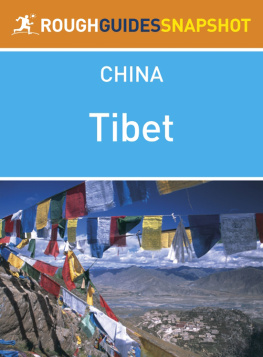
![David Leffman - The Rough guide to China [2014]](/uploads/posts/book/197581/thumbs/david-leffman-the-rough-guide-to-china-2014.jpg)



